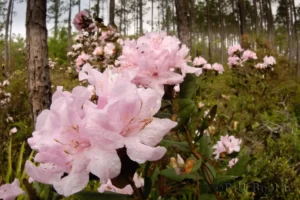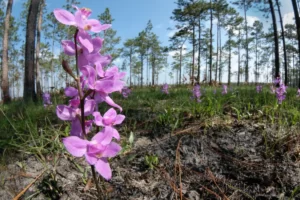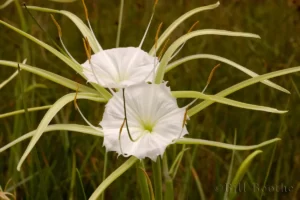As of 2023, almost 500 of Florida’s plant species receive some type of federal and/or state protection. Unfortunately, as the figures below show, this number continues to grow as the pressures of development increase on Florida’s remaining wildlands.
- 50 Federally endangered species (44 in 2010)
- 12 Federally threatened species (10 in 2010)
- 449 Florida endangered species (431 in 2010)
- 117 Florida threatened species (115 in 2010)
The Semaphore Cactus (Opuntia corallicola) is a species whose endangered status is easily understood. Less than a dozen individuals survive in the wild in a Florida Keys preserve. It has been extirpated from all the other Florida Keys. These plants appear to be all male. Fortunately, there is still hope for this species as captive-bred plants are being reintroduced to other protected sites.
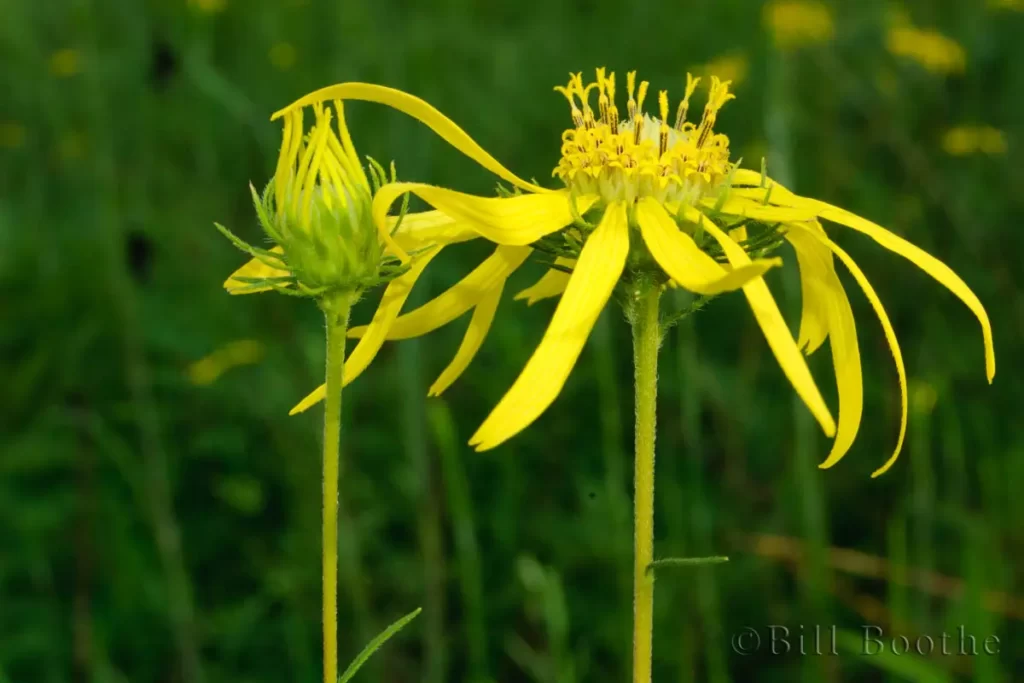
Some listed plants may be very common in other parts of the United States, but are rare in Florida because the right growing conditions are geographically restricted. Examples include Wild Columbine (Aquilegia canadensis), Round-Lobed Liverleaf (Hepatica nobilis), and Allegheny Spurge (Pachysandra procumbens) which are normally found in the Appalachian mountains. You can see many of these species growing along the trails at Florida Caverns State Park near Marianna.
A rare species may also be “locally abundant;” that is, it is prolific at certain sites. For example, the threatened Pineland False Sunflower (Phoebanthus tenuifolius) seems to be everywhere in the flatwoods of the Apalachicola National Forest, but is not common elsewhere. This species is doing well because of proper prescribed burns. This illustrates one prevalent reason for the decline of many species: interference or mismanagement of a species’ ecosystem. Fire suppression is responsible for the decline of many species in these photo galleries. Where burning is suppressed or timed incorrectly, fire-dependent species will not thrive. Within the Apalachicola National Forest, pinelands are burned frequently to enhance fire-dependant species such as the Pineland False Sunflower. Just a few examples of fire-dependent species are Grasspink orchids (Calopogon spp.), White Birds-in-a-nest (Macbridea alba), Scrub Buckwheat (Eriogonum longifolium v. gnaphaifolium), and Harper’s Beauty (Harperocallis flava).
Interference with seasonal flooding and drought in the Everglades and Big Cypress Swamp ecosystems is one example of interference by man which leads to a species’ decline. The Okeechobee Gourd (Cucurbita okeechobeensis) was once abundant in the Kissimmee River basin before it was channelized. This species in peril is now restricted to a few sites around Lake Okeechobee and St. Johns River.
Other examples of our interference are agricultural and residential runoff, destruction by off-road vehicles, spraying of herbicides, roadside construction, and improper roadside mowing. Road construction is one of the major threats faced by limestone glades found in Gadsden and Jackson counties.
All plants require a specialized environment or habitat in order to successfully reproduce. Some species require extremely specialized growing conditions. The Smooth-barked St. Johns-Wort (Hypericum lissophloeus) grows only on the shores of karst ponds in two north Florida counties. Nuttall’s Rayless Goldenrod (Bigelowia nuttallii) grows only in thin soils on acidic rock such as sandstone or siltstone. Many species of orchids will only grow in association with certain soils or plants.
Endemic species are found only within a specific geographic region or habitat. As a consequence, many but not all endemics are uncommon to rare. Due to their specialized habitat requirements or geographic isolation, they are more susceptible to endangerment than other species. Forty-four of Florida’s 221 endemic species in Florida, almost twenty percent, are federally protected. An example of this geographic and habitat specialization is found in Florida scrub habitat on the Lake Wales Ridge in central Florida which extends southward from Lake Wales to Lake Placid.

This vanishing Florida scrub habitat was once very common. Now, it is fast disappearing because housing developments have moved inland from the coastal areas which are already “filled up.” Some scrub species such as Highlands Scrub St. Johns-wort (Hypericum cumilicola), Scrub Eryngium (Eryngium cuneifolium), and Sweet-scented Pigeonwings (Clitoria fragrans) may still be seen in many protected areas such as Bok Tower Gardens, Archbold Biological Station, Lake June in Winter State Park, and several Nature Conservancy preserves, just to name a few.
Destruction of habitat by residential and agricultural development is making many other habitats scarce as well. An extreme case is the pine rocklands which are found in south Florida near Miami and the lower Keys. Ninety-five percent of this habitat has been destroyed for agriculture and housing. A few Rockland species such as Miami Leadplant (Amorpha herbacea v. crenulata), Red Stopper (Eugenia rhombea), and Small’s Milkpea (Galactia smallii) may still be seen at Everglades National Park and National Key Deer Refuge.
Additionally, the Everglades and Florida Keys are seriously impacted by multiple threats: habitat specialization, geographic restrictions, destruction of habitat, illegal plant collection, and fire suppression. An excellent place to see the subtropical species of the Florida Keys is in John Pennekamp State Park which has numerous identified native trees and shrubs planted at a trailhead near the boat landing.
Orchids, bromeliads, carnivorous plants, and some cacti face additional pressure from illegal collection from the wild. The Cowhorn Orchid (Cyrtopodium punctatum), Ghost Orchid (Dendrophylax lindenii), and Clamshell Orchid (Prosthechea cochleata) are beautiful orchids that were collected almost to extinction by “professional” poachers. Over time, even digging up a roadside plant by the casual passerby who means no harm can hasten a species’ decline as well as depriving others the joy of observing or photographing the plants. See the article about Mrs. Henry’s Spiderlily (Hymenocallis henryae) for an example.
The decline of other species has been hastened by deliberate eradication. The Manchineel (Hippomane mancinella) is rare partly because the tree’s extremely toxic sap can cause death or blindness. Invasion by exotic species is a serious threat faced by our native flora. The survival of Florida’s bromeliads is in question as they are literally being eaten away by an exotic weevil (Metamasius callizona) rightly called the “evil weevil.” (See Florida Department of Entomology and Nematology Publication EENY-161 for details.) Cacti are reduced to skeletons by an exotic cactus moth (Cactoblastis cactorum). (See the Florida Division of Plant Industry’s Entomology Circular No. 333 for details.) All parts of Florida are affected, but the subtropical flora of the Everglades and Florida Keys is especially susceptible to encroachment by exotic plants such as Brazilian Pepper (Schinus terebinthifolius), Punktree (Melaleuca quinquenervia), and Japanese Climbing Fern (Lygodium japonicum).
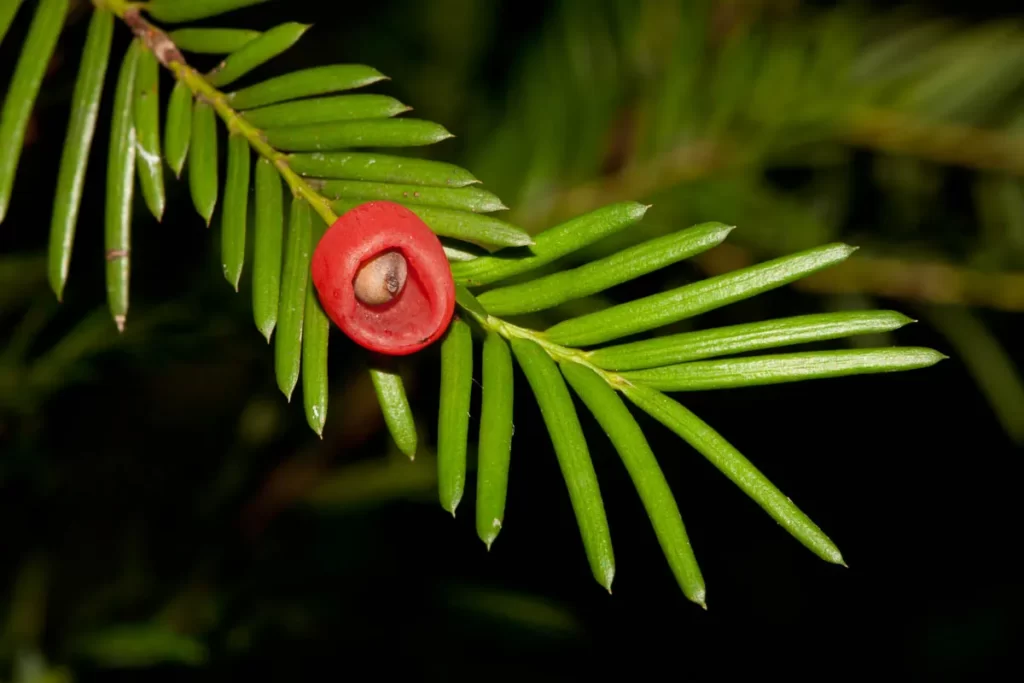
Global warming is one of the newest threats facing many plants species. Relict species that remained after the glaciers retreated from Florida may be especially vulnerable. Relict species are remnants of a formerly widely distributed group in an environment different from that in which they originated. One of these relict species is the Florida Yew (Taxus floridana) which is found only in two north Florida counties along the Apalachicola River. This relict species became separated from its northern cousins when it remained in Florida after the glaciers retreated.

